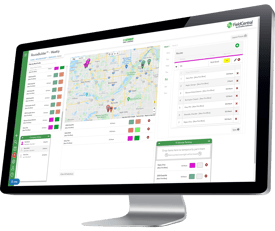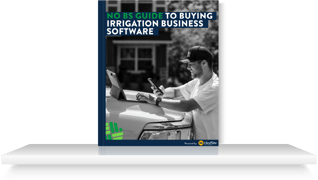 Are you getting the most out of your service scheduling software? While we have a lot of industries using our software, the irrigation and landscaping guys in the northern climes are getting ready for their version of hell week right now: Spring Turn-Ons.
Are you getting the most out of your service scheduling software? While we have a lot of industries using our software, the irrigation and landscaping guys in the northern climes are getting ready for their version of hell week right now: Spring Turn-Ons.
I'm not sure if our other customers go through the insanity of literally every one of their customers calling them within a 3-week period demanding that their lawn sprinkler systems get turned back on (that frozen white stuff is gone now, y'see) RIGHT NOW, but the lessons learned here can apply to any seasonal maintenance scheduling.
#1 Who!?
It sounds basic, but when it comes to seasonal scheduling, who do you want to schedule? How are they marked within your software so you can easily and quickly identify them... all of them... at once. We're talking efficiency, right? So that means you can pull up the entire list.
#2 Classify Your Customers
Who gets what? Different customers will have different systems, and will require different types of services. Once you've identified your list, you need to identify the services each customer receives.
#3 Map 'em!
If your service scheduling software doesn't integrate with a mapping tool (like Microsoft MapPoint™), get one that does. What we're talking about is scheduling customers by neighborhood, so that your technicians are dispatched to a specific area on a specific day, and every appointment is within a set distance.
#4 Manage the Exceptions
You now have actual work orders or jobs on the schedule. You mapped them, scheduled them for the day, used the same mapping tool to route them in the best driving order for each tech. Now all you have to do is send out postcards informing your customers of when you'll be at their site...and to call you back if that set time doesn't work!
Wait! I can hear the cries of dismay and disbelief already. I have personally heard them from more customers than I can count: "There's no way my customers will accept this! I've always scheduled each one with a personal phone call! It takes weeks and weeks but it's the only way!" No. It's not. I have yet to hear of a customer who did their seasonal scheduling using these practices, and had any issues! What did they hear? Silence. No crazy phones, no masses of angry customers... just their techs, doing their jobs, in peace. These practices get good reviews.
So, how do you manage the exceptions? You do #5.
#5 Be Flexible
Leave room for drive time. Make sure you communicate special cases to your techs. Make sure you can move things around, maybe even leave an "open day" on each weeks' schedule to handle those few customers that do need to move an appointment. Oftentimes schedules are like battle plans: they don't survive first contact. But this is nothing new. Good communication and a little wiggle room on the schedule to handle exceptions is all you need.
BONUS:
All of this revolves around two things: scheduling software with a strong CRM (customer relationship management) database, and clean data. Clean data allows you to know which service the customers get, to know how long each appointment should be, and to automate the scheduling process so that it takes a few days instead of weeks.
It works! One of our customers (Dinah at B & B Irrigation) said she used to "work lots of long days, but no more! Now during the busiest times of the year, I work regular hours." Start leveraging your software and your customer information to make your busiest times easier to manage.







